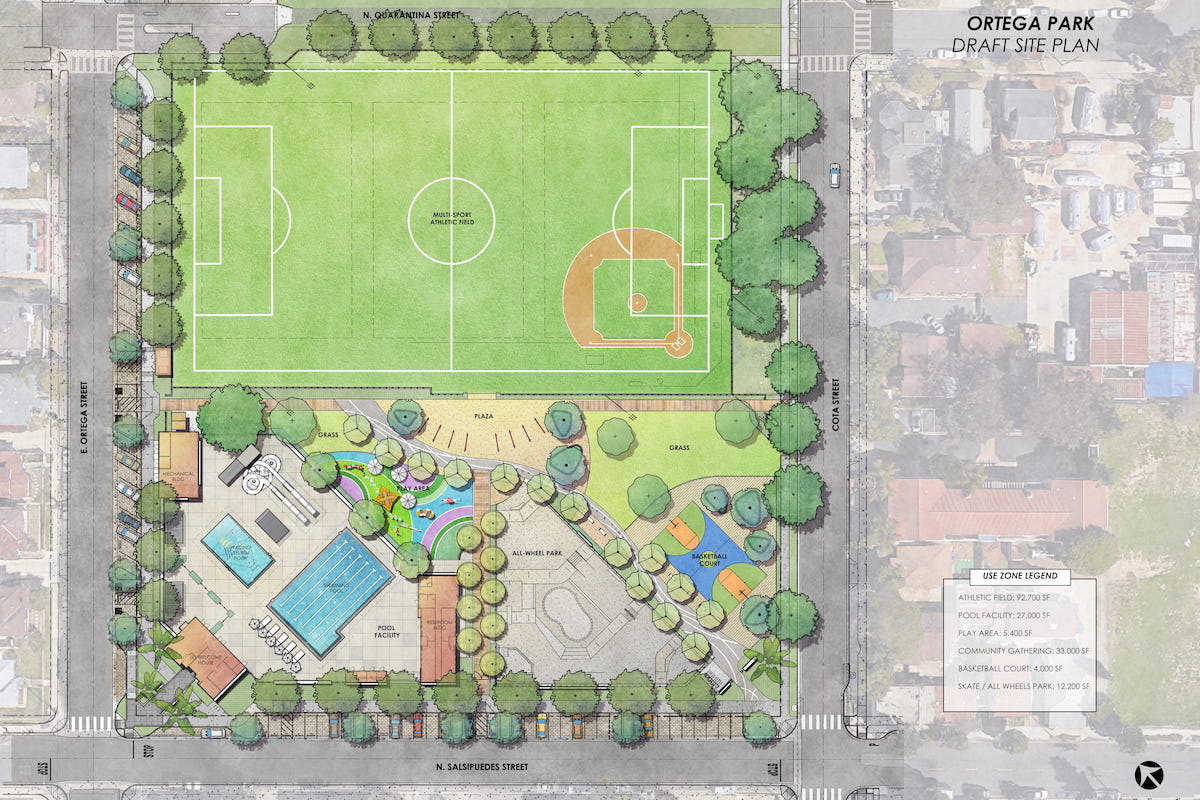City of Santa Barbara to Apply for $4.5 Million Grant Toward Ortega Park Overhaul
Community Continues to Voice Concerns over Proposed Design While City Looks to Fund $15 Million Project

The City of Santa Barbara will be applying for $4.5 million in federal grant funding toward the long-awaited — and hotly contested — Ortega Park Master Plan. The entire project is expected to cost $15 million, and will include a new synthetic turf field, a community pool area, and “all-wheel” park, although the recently approved designs have still left some Eastside residents feeling unheard and left out of the planning process.
The City Council is expected to approve a resolution this week to apply for the federal grant, which is provided through the Land and Water Conservation Fund and administered by the California Department of Parks toward projects that “increase outdoor recreational opportunities for the health and wellness” of residents in the state.
When the Ortega Park revitalization plan was originally approved in 2019, the city aimed on going for an $8.5 million grant, but after significant pressure from the community to preserve the park’s historic murals — which were left out of the city’s plan to renovate the park — the city missed the deadline for the grant and was ultimately denied the money.
Since then, it’s been a whirlwind of community workshops, hearings, and redesigns, with the most recent plans receiving Project Design Approval during the March 20 meeting of the Architectural Board of Review.
During that meeting, Project Supervisor Justin Van Mullem gave a brief outline of what the project has been through to this point.
Ortega Park, which has been a cultural hub for the Eastside neighborhoods for decades, “has not significantly been improved for over 50 years,” Van Mullem said, “and it does not any longer adequately serve the community.”
From 2018 to now, the city has held 10 public hearings, 22 community events, and a community survey, he said, and the latest version represents a project “truly designed through community input.”
The most recent public meetings led to a number of final changes, he said. These include a finalized mural location map; a larger lap pool, which was expanded from four lanes to six; a “simplified” and more open plaza, which originally featured Ping-Pong tables, bocce ball courts, and cornhole; and a more inclusive “all wheels” park to allow skateboards, scooters, bikes, and roller skaters.
Despite the extensive community outreach and the city’s willingness to adjust to the residents’ comments, there has still been consistent public concern over the designs. During the March 20 meeting, several Eastside residents complained that the design lacks green open spaces, with some wondering why the city didn’t opt for natural grass for the multi-sports field.
Others argued that the most recent community meetings were more for appearance than for true public input, and that the workshops lacked any “hearty discussion,” with residents instead feeling like the city was presenting a project that was already a “done deal.”
Andi Garcia, an Eastside resident and member of the Ortega Park Steering Committee, said that “the project has lacked vision from the beginning” and that city employees at the public workshops were not open to input from residents.
“This project is being pushed through rather than having some real comprehensive, thorough community input,” Garcia said.
The city will need to apply for grant funding by June 1 in order to be eligible. The Ortega Park Master Plan has already received $1 million through the Outdoor Recreation Legacy Partnership Program of the National Park Service, and the remaining balance of $9.5 million will likely come from other grant opportunities, Measure C, and general fund capital allocations.



